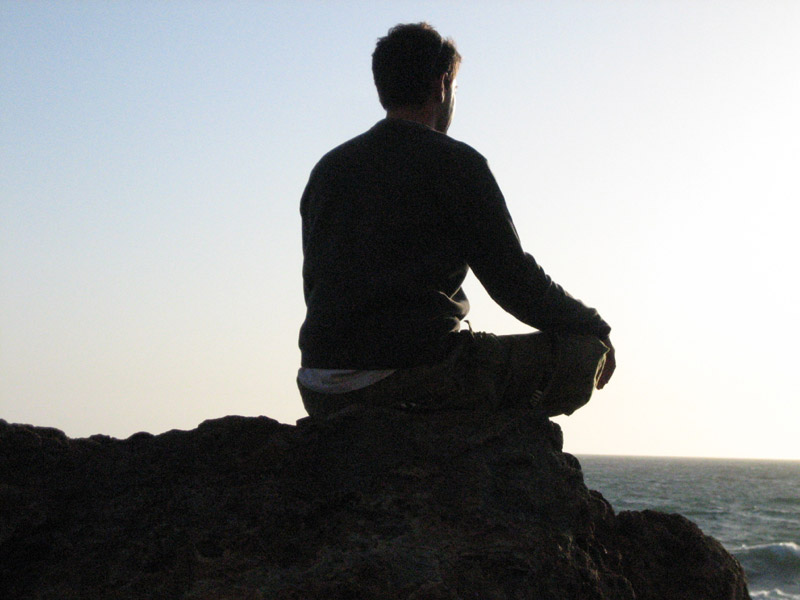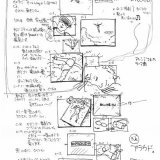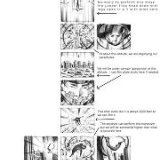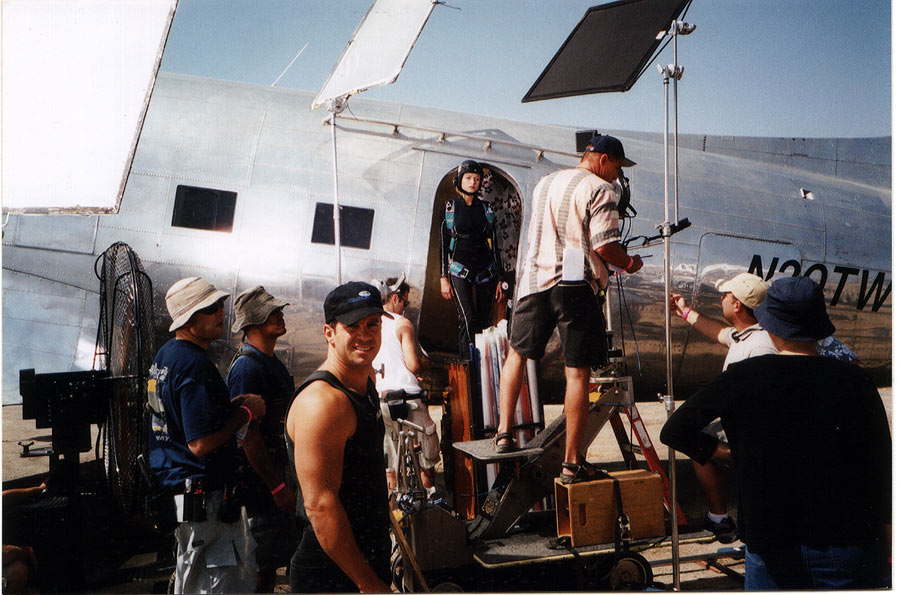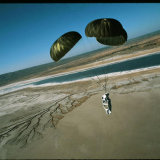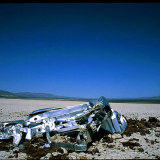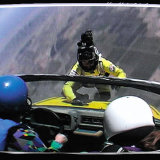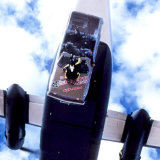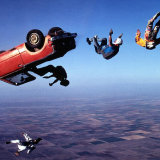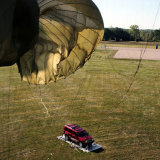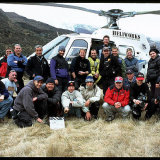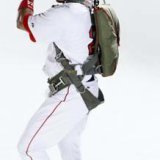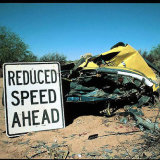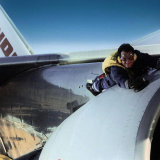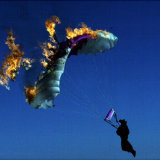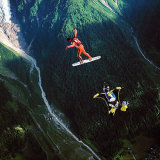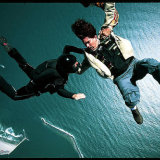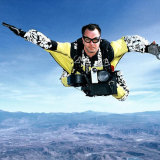-
Content
-14 -
Joined
-
Last visited
-
Days Won
1 -
Feedback
0%
Content Type
Profiles
Forums
Calendar
Dropzones
Gear
Articles
Fatalities
Stolen
Indoor
Help
Downloads
Gallery
Blogs
Store
Videos
Classifieds
Everything posted by admin
-
It isn't news that women who skydive are exceptional creatures, and most of the sisterhood is hip to this fact. So, to celebrate their common bonds, many of them travel from far and near every fall to the Skydiving Chicks Rock Boogie, at Skydive Elsinore in Southern California. Wicked fun skydives and even wilder festivities with some exceptional ladies are the custom and with a 50-50 ratio of ladies to men, the guys are equally stoked to have so many skydiving babes in one place. This annual celebration boasts a bigger turnout each year as most participants agree, "Chicks Rock Boogie is the best boogie EVER!" Of course this is subjective, so here's a look at what went down at the 6th annual event, September 29-October 1, to cause such a groundswell. The long-anticipated bash was heralded by the Women's Head-down World Record camp Thursday, September 28-29, led by Melissa Nelson and Amy Chmelecki. The camp focused on building a solid foundation of head-down skills in small, relaxed, intimate skydives. Participants ranged from intermediate to advanced freeflyers, and learned how to fly each slot launching a 4-way flower, float, dive, the importance of keeping heads on level, docking, breathing and goal-setting. Personal and group improvements, and the feeling of solidarity created a contagious excitement between the women. With their beautiful smiles and calm ways, Melissa and Amy were friendly and easy to get to know. Their Zen-like quality in the air encouraged others to relax, and get the most from the skydives. The most interesting and effective bullet in their presentation-"Fly like you're the sexiest woman in the sky!" The pulse quickened as skydivers and vendors rolled in throughout Friday. Elsinore's reputation for its' sensational and friendly vibe could be sensed just by looking around: gorgeous mountains to the East and West, clear blue skies, and cushy, reclining couches near shady trees on an emerald lawn for socializing and relaxing between jumps. Jumpers were greeted by cheerful office staff and volunteer, Tanya Porter, who came prepared with her characteristic homemade cookies, Go Fast drinks, stylish T-shirts, and goodie bags to dole out at registration. Tanya is one of those women who always has a smile and treats for everyone on the dropzone. Jumpers' material cravings were fulfilled by a variety of vendors and sponsors on site: Performance Designs to demo canopies, Vigil USA for AADs, Velocity Sports, Relative Workshop, Liquid Sky Jumpsuits discounts, Ouragan Suits discounts, Altimaster altimeters, Bliss Therapeutic Massage services, Matter Clothing, Go Fast energy drinks, Elsinore Gravity coaching, and Elsinore Freefly School coaching. And for those needing a different kind of rush, expert body-piercer, Moo, needled in on willing participants. Friday morning, load organizers wasted no time getting creative with skydives that combined fliers of all disciplines and skill levels. The world-class talent available to jumpers contributed to their excitement as skills improved with each jump. For freeflyers, jumpers could choose from Amy Chemelicki, Melissa Nelson, Andy Malchiodi, Andrew Staich and Danilo Dadic. Formation skydivers stayed sated with Lou Ascione of Elsinore Gravity, Brianne Thompson, and Marie Harrell. Wingsuiters could demo one of Tony Suits new wingsuits with organizer Jeff Nebelkopf. Most everything in between (hybrids, sequential hybrids, rodeos, and hybrid-rodeos) could be handled by the multi-talented Melanie Curtis and Steve Simar. If you can dream it, they'll try it at Chicks Rock! Like jumper Christine Freiherr's hybrid idea that turned into a successful 4-way open accordion hybrid with two hangers turning points. Friday wound down with a barbeque, kegs and a riveted audience in front of the big-screen. The night' feature: a best-of compilation by legendary freefall videographer, Tom Sanders, and the premiere viewing of Andy Malchiodi's newest release, "The Remedy", featuring all the big-way freefly sequential events of the last two years, plus Andy's Accuracy & Swoop Tips-a gasper for sure! From dawn Saturday until the wee hours Sunday morning, Skydive Elsinore was a glowing, bubbling cauldron of activity. Load organizers hustled to keep up with the planes and maintain variety. Lines for manifest grew as jumpers got a taste of what Chicks Rock is all about-ridiculously fun and exciting skydives with women in the spotlight! Jumps stayed spicy and varied with tube jumps, tracking pylon races, multiple-point freefly jumps, lots of hybrids, Pink Mafia Sister initiations, 4/6/8+ way RW, plus Skysurfer hybrids, tracking dives, head-down pylon races, Marianne Kramer's bittersweet glitter dive, and plenty of "chica-ways" (all-chick skydives), including memorable all-chicks sunset tracking loads with all the ladies in, smiling and stoked to be sharing the love with their sistas. There was such an intense excitement around the dropzone that few noticed when the Skyvan literally blew up after one load. No one seemed to mind having just three Otters flying back to back all day long. Saturday's sunset load was a hit and chug flown by the DC-3. The long ride to altitude on the DC-3 was made memorable as the sunset's orange-pink glow filtered through the small windows casting a cinematic light on the restless jumpers. Spectators waiting in the landing area belly laughed their way through the hit and chug comedy show, starting with Jonathan Tagle shaking the waiting cans of beer in the peas, to jumpers spraying themselves with exploding beer as fierce competitors plowed them over to get their own. That's "just the way they roll" at Skydive Elsinore. As the last jumpers landed during the sunset on Saturday, Jeff Nebelkopf drew a grand, circular crowd as he fired up his chainsaw and set to work carving an ice-sculpture shot-luge in the form of a muscular man's torso for the ladies to get their lips on. Saturday's Night Swoop Demo was a sure crowd pleaser with fresh kegs handy pond-side and shows from Isaiah McCauliffe, Andy Malchiodi, Chris Johnston, and John Hamilton. Then, in grand finale fashion, J.C. Colclasure and Jonathan Tagle performed a perfect 2-way, eliciting a thunderous roar from the audience! Event staff were challenged in keeping the audience a safe distance from the edge of the pond during the demonstration. And it grew even harder when announcer, Steve Simar, declared above the applause, "And for our Finale: Andrew Staich will be confidently swooping NAKED for all you ladies (and gents)!" Just, Wow! What a great pre-dinner appetizer! Surprised chicks stared with mouths agape and eyes glued to Staich's long, smooth swoop. And, no, he didn't get wet. Then, hungry skydivers relaxed together over a delicious, catered dinner of roast chicken before donning sensational Rock Star costumes to kick off the Saturday night theme party in grand style. Everyone played the part, with lots of Rock Star attitude, wigs, big coats, makeup, tight clothes and skin! Partiers got in the groove with Jell-o shots concocted by the amazing Rosa Alva (yet another skydiving chick who rocks) to benefit breast cancer. Rosa has this attractive perennial exuberance and energy. She organizes and participates in fundraising for medical charities like Locks of Love, the Susan G. Komen Breast Cancer Foundation and the National Philanthropic Trust Breast Cancer Fund. Skydivers spent nearly $450, in one night, on her Jell-o shots! In addition, partiers enjoyed scintillating body shots, cool shots flowing down the male torso ice-luge, landing in eager ladies lips at the happy trail, and a variety of kegs loitering in the four corners of the bar. Moo kept the dance floor packed until 2AM with favorite rock star tunes. Others kept warm around the fireplace catching up with old friends and making new ones. It's easy to do at Skydive Elsinore. Sunday was a slow morning for lots of skydivers, but there were enough die-hards to get the first load up by 8:30. Another DC-3 load went up on Sunday, and many skydivers who jumped it Saturday enjoyed it so much they came back for more. Sunday afternoon's raffle winners collected all sorts of prizes that make skydivers smile. Two otters flew all day long, and were still packed come sunset. Both sunset loads were hit-n-chugs! Jumpers relished the beautiful scenery up high with mountain terrain and ocean horizons to the east and west and gorgeous Lake Elsinore below. Video and stills were the name of the game, on the ground and in the air, because everyone knows if there's no video, it didn't happen! Pat Newman faithfully collected footage of the antics for the Chicks Rock DVD and Skydive Elsinore website. (They're all about pictures; helps recollect the insane, foggy moments.) Melanie Curtis, event organizer at Skydive Elsinore, really knows how to throw a swingin' shindig that attracts confident, adventurous babes like herself: offer a variety of activities, skydives, stunts, food, liquor, music and eye candy! Outgoing and energetic, she's a natural at helping you feel like part of the family. Her passion for teaching and talent for putting jumpers in the right slots, make organizing successful, multi-disciplined skydives look easy. From the myriad of crazy faces she has for any camera nearby, to her witty and hilarious commentary, Melanie is always making those around her laugh. Boasting hundreds of participants from all over the US and as far as Japan, and 127 loads, this year's Chicks Rock Boogie was the most exciting and successful yet. The weather was perfect, and there were no major injuries, despite a few nail-biting landings. DZO's Karl Gulledge and John Hamilton were truly unique in their friendly and dedicated approach to ensuring everyone had an enjoyable experience. Bottom-line: You're missing out on one of the friendliest, most exciting skydiving boogies around if you haven't been to the Chicks Rock boogie held each year at Skydive Elsinore. The countdown to next year has begun…. Will you be there?
-
Product Service Bulletin Issue date: 2 December 2006 Bulletin number: SB AMM021206/1 Subject: Mandatory cutter replacement in Mirage rigs Argus Cutter PN# ARG001CUT manufactured for Aviacom SA by Nobel Energetics. Background:As part of our evaluation program, the Argus was installed in an RTS M7 Mirage and made 46 jumps. When opening the reserve container the loop was frayed around the area it was going through the cutter. The plastic insert was damaged at some point during closing. Further investigation showed that the damage was due to the typical set-up of the cutter on top of the concave pilot chute cap modification that the Mirage has since May 2005. This damage only occurred with the Mirage After consulting Mirage Systems we decided to replace the cutters in all Mirage rigs with a modified insertless cutter that has meanwhile been intensively tested and does not cause any damage whatsoever. Service bulletin:The "old" cutter with the plastic insert must be returned to Aviacom SA for replacement. The new cutter will be shipped as soon as we have received the old one. The new cutter is easily identified by the safety seal on the body. The date of manufacturing is November 2006 or later. Any senior or master rigger or foreign equivalent can unscrew the cutter and replace the old cutter with the modified one. The connector must be locked hand tight in order to ensure the water resistance. Compliance date:Before the next jump, but no later than June 30th 2007. CommentsIn order not to create confusion, all Argus cutters manufactured before November 2006 and not sporting a safety seal on the body must be mandatory replaced before June 30th, 2007. The cutters will be replaced free of charge. You can download the full service bulletin: http://dbc.landingpage.be/475/SBAMM021206_1.pdf For a video clip of the new cutter check: http://www.argus-aad.com/media/Downloads/MVI_0552.avi Dropzone.com Editors Note: Please note that while the official subject of this service bulleting is "Mandatory cutter replacement in Mirage rigs" that in fact "all Argus cutters manufactured before November 2006 and not sporting a safety seal on the body must be mandatory replaced" as mentioned in the comments in the full bulletin. The subject as at very least confusing. Please download the entire Service Bulleting from the link above and read this forum post for a response from Mirage Syatems.
-
Most skydivers exercise some form of mental preparation on the way to altitude. What most do not realize is how incredibly important this is. The mental state that we are in prior to exiting the airplane determines how we respond to any given situation, and this response is the most important contributing factor in how the situation ultimately evolves. In other words, mental preparation is every bit as important as a pin check. What is Meditation?It must first be clarified that the specific method of meditation is not important for the purposes of this discussion. There are many ways to attain a calm internal dynamic, and there are no wrong ways to meditate. The goal of meditation is simple. We are striving to calm the mind, and develop a state that is devoid of thinking so we may calm back down to our state of basic sanity and health. This can be achieved through sitting practice, or through deliberate focus of attention toward a simple task such as walking or yoga. All of these pursuits result in the same kind of brain activity, which happens to be the direct opposite of the fear state. In the emotional experience of fear, the brain becomes unbalanced. Certain parts of the cortex become deactivated, while others, most notably the older structures such as the Amygdala, become awakened. These ancient brain areas cause an unconscious escalation toward a preparatory "sympathetic" response, rather than the healing, balancing forces of our "parasympathetic" systems. Interestingly, the first part of the brain to show significant diminished functionality during a fear response is the pre-frontal cortex. This is the newest part of the brain, responsible for higher cognitive functioning and is the source of willed action. This means that when we are afraid, we are no longer in control of our actions. Our choices gradually become dominated by our old brain that only knows three things: Fight, Flight and Freeze. In walks the "parietal lobe" of the brain. Located on the crown of the head, this is the spatial orientation area. When the parietal lobe is working to help us orient ourselves in the world, we are not in a state of rest. When this part of the brain is under-stimulated or deprived of input, however, the quiescent (calming) systems of the mind and body take over to cool us down. When the visual information coming into the visual cortex is interpreted by the parietal lobe, there are aspects of our visual experience that have not changed in the recent past. These aspects of our reality become "base frame", which is to say that we stop paying attention to them. When this occurs to a majority of the visual data, the parietal lobe is said to be in a state of "Deafferentation". (Newberg, 2001) Deafferentation may be the cause of the altered states reported by mystics and spiritual seekers of all cultures. The common denominator across all the spiritual practices is the lack of changes in the data set coming into the visual cortex. This is accomplished simply by gazing in one particular direction for a long period of time. When the parietal lobe is deprived of neural input, our parasympathetic processes begin to transform our state of consciousness, as demonstrated in brain scans such as SPECT and functional MRI. The resulting brain activity is most notably different from our normal waking consciousness, called "beta" activity. In fact, experienced meditators exhibit extremely balanced activity throughout the brain, referred to as "gamma synchrony" (Davidson, 2004). Further studies have shown that the balance of activity in the parietal lobe is significantly different from that experienced in "normal" consciousness (Newberg, 2002). The interesting thing about the results of the many studies on meditation is the fact that repeated exposure to the meditative state seems to increase the effect. Buddhist monks with considerable meditation practice showed a much higher level of gamma synchrony than subjects with no previous experience (Davidson, 2005). It seems that practice really does make perfect. What does this mean for you and me? These studies show that we are actually able to alter our brain's activity, and prevent stress from diminishing our cortical activity to the capacity of a caveman. All we need to do is take the time to practice a new way of operating our minds. Although there are many different methods of meditation, there are common aspects across the techniques that seem to create the most powerful effect. Following are some of the common elements. Minimal change to the visual field, eyes open Focusing on the breathing, particularly the out-breath Balancing the posture to prevent physical discomfort Letting go of thoughts as they come Returning to the present momentWhen you exit an aircraft in flight, you are going into battle. You must prepare in every way that you can to defend yourself against planetary impact. The most important tool of all is your awareness. When your mental speed increases due to fear or anything else, you are a danger to yourself and everyone near you. How you find your way to the meditative state is your business. Your rituals are your personal avenue to the calm state, and it will look different for everyone. All that matters is that you take the time before each jump to cool out and let go of your thinking. That way, when some unconsidered possibility comes your way, you are relaxed and in balance, ready for anything. BSG Portions of this article are excerpts from Brian Germain's new book, Transcending Fear, 2nd edition. For more information regarding meditation as a tool for fear abatement and performance optimization, go to: www.TranscendingFEAR.com
-
The uninsured Relative Workshop will commence trading under the new name of the Uninsured United Parachute Technologies, LLC from 1 October 2006. This change will allow Bill Booth to gather his many existing companies under one name, and will allow the company to implement a new business model more inline with modern day business practices, which in turn will fulfill our future needs for growth and diversity. This change will not affect our day to day business with our customers, apart from a change in website address and email addresses which will be advised at a later date.
-
Do not contact the site admin. We can not provide you with more information than what you can find below: Read the Security and Scam Alerts forum. If we've had a complaint about a user it's likely to be logged here. Read about different scams in the Security and Scams Help Section. Make sure you understand how these common scams work. Look at the user's profile. This is the information the user opted to make public. Look at the registration date, how active has the person been on the site. Ask questions!Before you enter into any transaction, ask a LOT of questions! As skydiving specific questions that will be hard for a non-skydiver to answer. Do your best to find out who's on the other side. When in doubt, cut it out. If you "feel" suspicious about a potential buyer or seller, it may be better to avoid the hassle and move on. Use your common sense!
-
Unfortunately not. Our privacy policy prohibits us from sharing user information that was not made public by the user. Here's what you should do.
-
I majored in Business Management with a minor in Spanish and dreamed of working for an environmentally and culturally sensitive corporation like Coke. My life was on track, and thinking back, I imagine I'd have been quite successful. But I fell for a girl who lured me off course. I was wrapped around her finger and didn't know at the time that she would entirely derail my dreams and change the course of my life. She made me an addict, and today I'm selling the same stuff that became my addiction, and I'm perpetually unemployed between jobs. She took me skydiving and now I fly camera for a living. It's a job I hadn't imagined, much less considered, but I like it! In this article, I'll try to give you an idea of what goes into bidding, planning, and filming for a production, and some of the things that can happen along the way. Bidding:The first call from production is normally from a researcher who's never jumped. He or she explains the aerial sequence, or some version of it, and then asks what I'd charge to do the job. Most of the time I can tell that what I'm being told is probably far from what's actually needed. But the researcher doesn't need an earful from me about how little he or she knows about the sport. Her job is to get numbers as quickly as possible, and my job is to give her something that she can take to her boss, some rough numbers, ideas, and a few of my own questions to pass along. All things going well, her boss will call. The basic bid for a skydiving project includes the location, aircraft, pilots, and skydivers, simple enough if the project requires a couple of jumpers in freefall over the local DZ. Most of the time, however, projects call for something more. A skydiving sequence for a commercial or movie might call for two hidden rig jumpers grappling for a briefcase over downtown Los Angeles. Suddenly the project requires riggers, custom equipment, ground crew, ground transportation, landowner permission for some parking lot or rooftop, FAA paperwork and permits, police to keep the landing area clear, ground to air communication, sometimes green screen and studio facilities, and especially in the USA, endless and often impossible insurance issues. When the producers call me with a story to tell. They need me to see the logistics behind the story and to bid accordingly. Sometimes I'll deliver a bid in an hour, sometimes it will take days to complete. The most valuable tool at this point is my rolodex. SAG:When I bid a SAG job, my terms include that I will be treated as a performer, just like the rest of the skydivers on the project. When a producer balks, my argument is simple. I ask them when they last hired someone to perform a stunt off-camera. Camera people sometimes hang off cliffs or race along in cars following the action, but they don't actually perform the stunt, nor do they need the kind of training that goes into flying a camera. Picture this: A stunt driver flips a car over a river. The shot requires a chase vehicle with mounted cameras to follow behind and make the same jump. Imagine telling the second stunt driver he's not on-camera, so he doesn't get a SAG contract. There are plenty more arguments like this, but they don't always work. A producer might stick to the off-camera argument and that's that, we reach an impasse. As much as I want the work, I don't bend on this issue. Sometimes I'll get a call from a producer who just wants to know if I'd consider working without a SAG contract, and I'll know that they've reached the same impasse with one of my competitors. That's the only time I'll give in...just kidding! Skydiving isn't a stunt:After my rant about SAG, now I say skydiving isn't a stunt, but bear with me. Skydiving is a sport, much like surfing or skiing and skydivers are practicing it on all different levels and making thousands of jumps to better their skills. There are skydiving stunts, no doubt, just like surfing stunts, but skydiving itself isn't a stunt. In productions, when there are surfing stunts, producers seek out surfers. When there's skydiving in a production, they call in stuntmen. Bummer for those who train! So I've been campaigning pretty hard to promote trained flyers. I was advised early in my career to keep things "in the family" by some of the stuntmen I met along the way, but I saw things differently and ultimately "broke the code" as it were, to bring in trained jumpers who I knew from the competitive circuit. Some say I "shot myself in the foot", and its true to some degree. Why would a Hollywood stuntman recommend a camera flyer who works with outsiders? So I miss out on some work, but overall my reel is strong, mostly because the performers I film are terrific flyers. Communication:Storyboards, often called "boards", are a series of drawings, much like the frames of a comic book, that help us to visualize what the writer or director is hoping to see onscreen. After all, we're making a moving picture. I know more about skydiving stunts than my clients, but they know more about storytelling than me. Often, a non-jumper will have some gem of an idea that I'd never considered. So I try to listen carefully before projecting too much of myself into the creative process, and my reel is better for it. When I'm clear about what the director wants, I'll plan skydives that show each storyboard frame in a way that will transition smoothly from one shot to the next, and some skydives just to film "plates". Skydiving plates are aerial scenes without skydivers that are combined with action that's filmed in front of a "green screen". The Green Screen:If an actor is featured in the aerial sequence, we'll film him in front of a green screen where we try to match the light and wind as close as possible to the real action. When we do it right, I can claim the shot as my own. When we do it wrong (picture Elvis surfing), I'll blame production for screwing it up. The green screen is both my friend and enemy. As a friend, it puts Lucie Lu into the action, and gives the impression that I'd filmed impossible things. As the enemy, it entirely replaces me. Insurers and lawyers, curse them all, sometimes drive the simplest of aerial stunts into the studio to be faked. And some directors feel that they can make skydiving look real, or better than real, in studio, with fans wires and green screens. Fortunately, the fake stuff just doesn't look all that good, so I'm not out of a job yet. The Helmet:I jump a modified 35mm motion picture camera with a video assist camera that lets the director see what I've filmed after each jump, and stills. My helmet weighs about 20 pounds. On some jobs, depending on the cameras I carry, the helmet can weigh up to 30 pounds. It's like jumping a bowling ball strapped to the top of my head. People ask how I handle the weight, what sort of workouts I do to build my neck and shoulders. The answer is, not all that much. I'm relatively fit and have done a few shrugs with dumbbells, and I swim to stay loose, but nothing extraordinary. There are a lot of camera flyers who are far stronger than me, but suffer neck and back problems from jumping even light cameras. Maybe it's genetics. My father is 73 and has never seriously hurt his back. Considering some of the disgusting deployments I've endured over the years, I can only guess that I have him to thank for my longevity in this business. Now I've been to the chiropractor a couple of times and its like "OK Joe, take a deeeep breath….. gooood, now let it out slowly and just relaaaax…. I'll just take a running start from the other side of the office and slam into your spine, and then twist your head around so that you can take a good look at your own ass." So I swim. It seems to keep me straight. Before production:At least a few days before a job, someone from the team will entirely take over coordinating. I'll have some input, but my attention is best focused on what the director wants and how to get it. I think over the boards, configure my helmet, choreograph and dirt dive with the team, set exposures, check my gear, and so-on. I don't multi-task well enough to worry about other details at the same time and I'm not concerned with being credited as a coordinator. Ultimately, I'm in this business to fly camera. Production Day:A lot of things have come together to get this far. Depending on the size and complexity of the project, anywhere from ten to fifty people or more will converge on set. It's refreshing to finally get out there to film, and by far, production is my favorite part of the job. It's also time to step up and deliver on a variety of levels. The pressure to perform reminds me of what if felt like to compete. Competition experience is probably my biggest asset as a camera flyer. Training to compete taught me a lot about flying the camera aggressively, and competing taught me about teamwork and about staying loose under pressure. The Team:I rely heavily on the team around me. And my work is only as good as the team's work, Cliché, perhaps, but true. Flying with Rob Harris in skysurf competitions, I had my part on the team, and even part of the score. Mostly, though, my work supported Rob's performance, and I found myself cheering for him in flight. When Rob had a good round, I had a good round. When he won, I won. Whenever possible, I fly with skydivers who've trained to compete on some level, and who perform well under pressure. On the ride to altitude, we're generally pretty quite, breathing and visualizing, eyes closed sometimes, rehearsing the dive. And it works. In the air, we're more fluid and relaxed, communicating but not over thinking, just doing what we'd planned. A rigger who can keep a cool head under pressure is also a great asset on any production. On hidden rig projects, for example, almost everything is riding on the rigger's work. Hidden rigs look spectacular when they work, but the slightest flaw can cause the rig to be exposed or even to blow the wardrobe clear apart. So I find myself cheering for the riggers as much as for the performers in front of me. And when it all comes together, we're golden. Harder than it looks:"Easy" shots on the boards can be deceptively hard because storyboards invariably call for moves we haven't practiced or even tried. I've seen talented skydivers entirely caught off guard by some simple change in a move that causes them to flail around like a first jump student. Try back layouts while "drinking" a soda, or "talking" on a cell phone, or maybe straddling another jumper without tumbling, or flying feet to earth while swinging a baseball bat. The list goes on and often includes hiding rigs or parts of rigs, or grappling while holding props, all the sort of things one rarely trains to do. On most jobs, we don't have the chance to practice new things before filming, so we'll just take our best guess and go for it. The challenge for me is to predict fall rates and how much slide there will be. I can react as things move and chase the action around the sky, but my shot is a lot better when I'm able to fly proactively. Things I don't like: Assumptions: "Well, I assumed you'd have a black rig here for me, so I didn't bother to bring one", or, "I thought they were taking that frame off the boards. That's why I didn't bring the prop", or "Nobody called me about it, so I just assumed you wanted the cables to be built like this". Screwing up: More than once, I jumped with the lens cap still on, jumped without a load of film, forgot my battery, forgot to turn the camera on, left my leg straps loose, forgot to latch on the helmet, set the focus for under a foot, exposed the same film twice, got onto the wrong plane, pulled too low, brain-locked in freefall, forgot to clip on my wings, walked to the plane without a rig, exited over the wrong place….. There but by the grace of god go I. Grandstanding: The last thing I want to hear on set is some skydiver making a big announcement for everyone to hear, like "You might get some idiot to do it, but you'll never tape over that handle as long as I'm wearing the rig", or "If you want to see a helicopter crash, sure, hook that line to the skid". Of course we have to set and enforce our own parameters for safety, but it isn't us against them. With a bit of diplomacy, we can explain our limits without embarrassing our clients. Jerk Producers: It's rare, but it happens. Producer: "The director needs you to pass close to the cliff like on your reel." Me: "If the winds calm, great, but right now they're blowing at 20+ miles per hour." Producer: "Look, nothing personal, pal, but I've been in this business longer than you think. I hope you understand I didn't come all the way out here to pay for excuses." Me: "Ok, let me talk with the guys" A few minutes later…."OK, we figured it out. We'll fly 100 meters from the wall. If the wind calms, we'll fly closer. And, we'll hang onto the exposed film until all payments for this job are received, nothing personal." I suppose there are reasons to become jaded over the years in this business, but it isn't worth the negative energy. Most productions are great, and some are epic! And most producers are good people, and good at what they do. Things I don't like (part 2): Crash landing in an airplane Hitting power lines in a helicopter Landing on thin ice Seeing another jumper get hurt Landing in a yard with guard dogs Being lost at night under canopy Opening too far offshore Hard openings Extra heavy cameras Whining (oops) What I like: Flying camera to tell a story Visiting cool dropzones Meeting great people Traveling Having family time between jobs Planning unusual projects Working through the physics of how objects fly Getting the shot Working with talented skydivers Dropping big things like cars Bragging about my cool job Being called a "Bald Headed Action Figure" by my kids Back in college, If someone said I'd fly camera for a living one day, I wouldn't have even known what they meant. And when I think back on the series of events that led me here, so much fell into place in ways I could never recreate. It makes me wonder where I'll be 20 years from now. I should thank the girl who lured me away from suits and polished shoes, maybe bring her something nice when I go home tonight. ~ Joe Joe's Photo Galleries on Dropzone.com Skydive.com - Joe's new project Skydive.tv - Joe's web site



